
Savannakhet Province: Laos' Serene Gem
Discover the serene beauty and rich history of Savannakhet Province in Laos, where lush landscapes, ancient temples, and vibrant markets await.
Nestled in the heart of Laos, Savannakhet Province offers a tranquil escape into nature and culture. Known for its lush landscapes, this province is a haven for those who seek peace and beauty. The Mekong River flows gracefully through the region, providing stunning views and opportunities for boat trips. Savannakhet is rich in history, with colonial architecture and ancient temples. Vat Xayaphoum Temple is a must-visit, showcasing intricate designs and a serene atmosphere. The province is also home to the Dong Natad Protected Area, where you can explore diverse wildlife and beautiful forests. The local markets in Savannakhet are vibrant and full of life. Here, you can sample delicious Laotian cuisine and buy unique handicrafts. Don’t miss the chance to try 'Khao Piak Sen,' a traditional noodle soup that is a local favorite. For those interested in geology, the province offers the chance to visit the 'Dinosaur Museum,' which houses fossils found in the region. Savannakhet is a perfect blend of nature, culture, and history, making it a memorable destination for all travelers.
Local tips in Savannakhet Province
- Visit during the dry season (November to April) for the best weather conditions.
- Bring mosquito repellent if you plan to visit the forests or protected areas.
- Learn a few basic phrases in Lao to enhance your interaction with locals.
- Wear respectful clothing when visiting temples.
Savannakhet Province: Laos' Serene Gem
Nestled in the heart of Laos, Savannakhet Province offers a tranquil escape into nature and culture. Known for its lush landscapes, this province is a haven for those who seek peace and beauty. The Mekong River flows gracefully through the region, providing stunning views and opportunities for boat trips. Savannakhet is rich in history, with colonial architecture and ancient temples. Vat Xayaphoum Temple is a must-visit, showcasing intricate designs and a serene atmosphere. The province is also home to the Dong Natad Protected Area, where you can explore diverse wildlife and beautiful forests. The local markets in Savannakhet are vibrant and full of life. Here, you can sample delicious Laotian cuisine and buy unique handicrafts. Don’t miss the chance to try 'Khao Piak Sen,' a traditional noodle soup that is a local favorite. For those interested in geology, the province offers the chance to visit the 'Dinosaur Museum,' which houses fossils found in the region. Savannakhet is a perfect blend of nature, culture, and history, making it a memorable destination for all travelers.
When is the best time to go to Savannakhet Province?
Iconic landmarks you can’t miss
That Ing Hang
Explore the spiritual heart of Savannakhet at That Ing Hang, a stunning Buddhist stupa steeped in history and cultural significance.
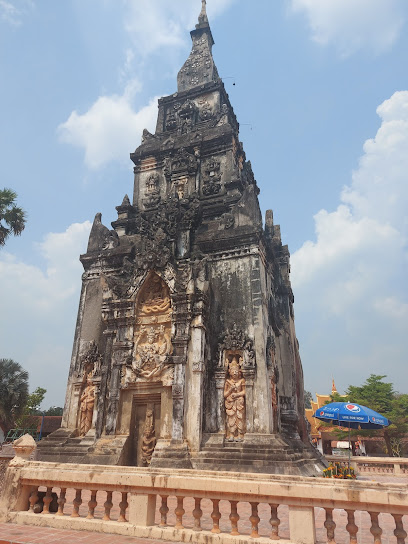
Nouhak Phoumsavanh Memorial Park
Discover the tranquility and historical significance of Nouhak Phoumsavanh Memorial Park in Savannakhet, a perfect blend of nature and Laotian heritage.

Savannakhet Dinosaur Museum
Explore the wonders of the prehistoric world at Savannakhet Dinosaur Museum, a family-friendly attraction filled with fascinating fossils and engaging exhibits.
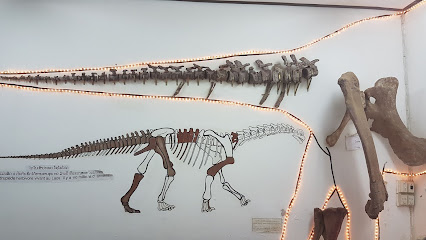
Wat Sainyaphum
Discover the tranquility of Wat Sainyaphum, a stunning Buddhist temple in Savannakhet, Laos, offering spiritual insights and breathtaking architecture.

Leena Guesthouse
Discover the charm of Savannakhet at Leena Guesthouse, where comfort meets local hospitality in the heart of Laos.
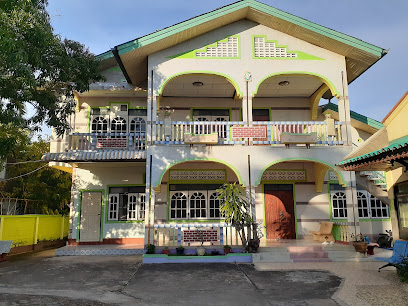
Savannakhet Museum
Discover the captivating history and cultural heritage of Savannakhet at the Savannakhet Museum, a must-visit for every traveler.
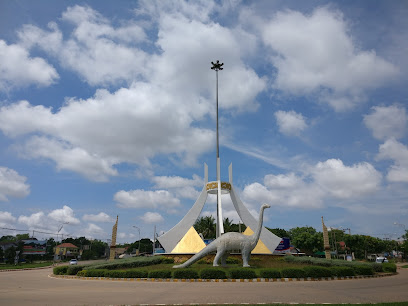
Monkey Forest
Discover the joy of nature and playful monkeys at the enchanting Monkey Forest, a unique attraction in Laos that captivates every visitor.
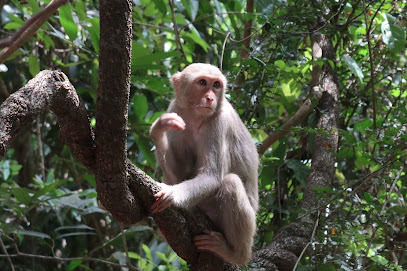
Unmissable attractions to see
That Ing Hang
Experience the tranquility and historical grandeur of That Ing Hang, a stunning Khmer-era monument in Savannakhet, Laos, perfect for cultural exploration.
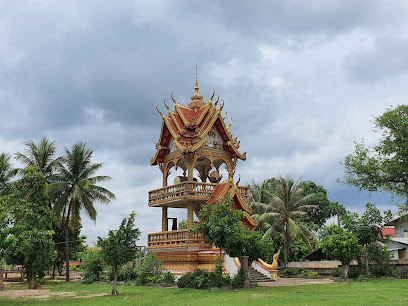
Nouhak Phoumsavanh Memorial Park
Explore the serene Nouhak Phoumsavanh Memorial Park in Savannakhet, a tranquil tribute to peace and Laotian heritage, perfect for reflection and relaxation.
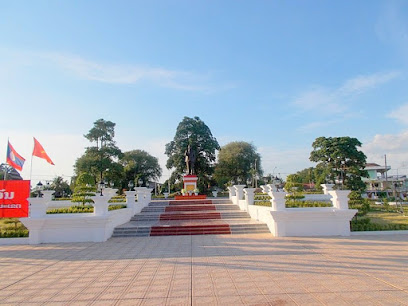
Savannakhet Dinosaur Museum
Explore the ancient world at Savannakhet Dinosaur Museum, featuring incredible dinosaur fossils and engaging educational exhibits.
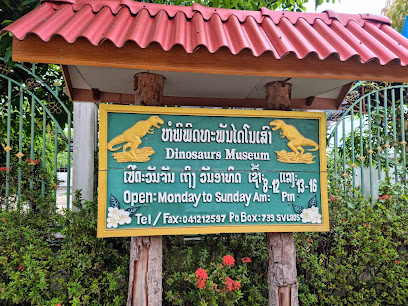
ອ່າງເກັບນ້ຳ ສູຍ
Explore the authentic charm of Ban Sakhuen Village in Champhon District, Laos, where culture and nature come together for an unforgettable experience.

Wat Sainyaphum
Discover the serene beauty and rich cultural heritage of Wat Sainyaphum, a stunning Buddhist temple in Savannakhet, Laos.
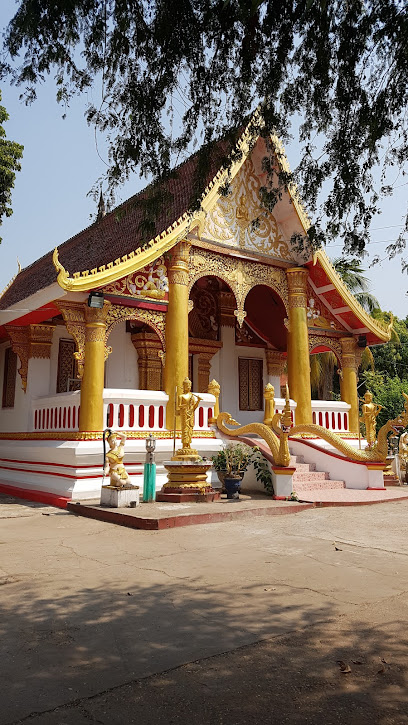
Hotay Pidok Library ຫໍໄຕສະຫວັນນະເຂດ
Explore the serene beauty of Hotay Pidok Library in Lamchan, where literature and culture come together in a tranquil setting.
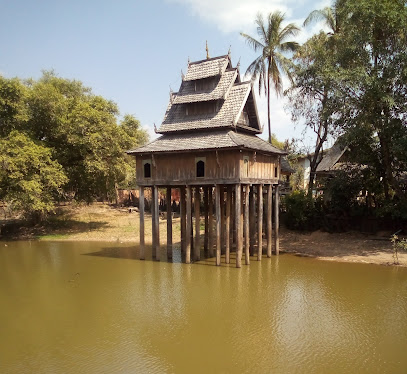
Savannakhet Museum
Explore the cultural tapestry of Savannakhet at the Savannakhet Museum, where history and heritage come alive through captivating exhibits.
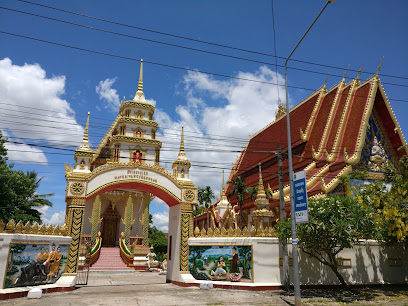
Monkey Forest
Experience the vibrant wildlife and serene beauty of Monkey Forest in Laos, a must-visit destination for nature lovers and adventure seekers.
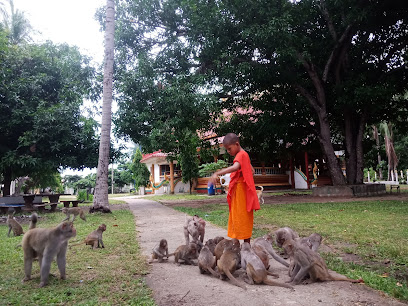
Lao-Vietnamese War Monument
Discover the poignant history of Laos at the Lao-Vietnamese War Monument, a symbol of resilience and cultural significance in Phin.
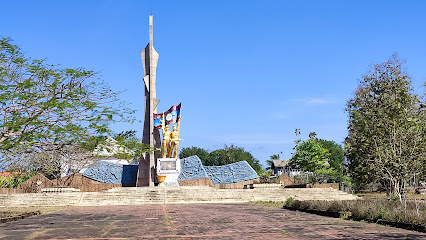
ບ້ານກາງ ເມືອງໄຊບູລີ
Explore the natural beauty and cultural richness of Nadung, a hidden tourist attraction in Laos perfect for every traveler seeking adventure.
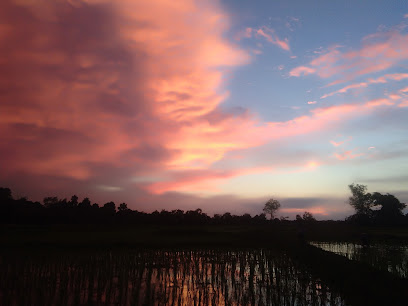
Huen Hin
Experience the serene beauty and rich culture of Huen Hin in Ban Na Phongthar, a must-visit tourist attraction in Laos.
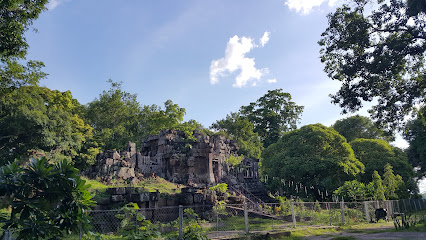
Cable Bridge
Explore the stunning Cable Bridge, an architectural wonder offering breathtaking views and serene surroundings for an unforgettable experience.

Sompoii Village ບ້ານສົ້ມປ່ອຍໃຫຍ່
Experience the charm and natural beauty of Sompoii Village in Savannakhet, Laos, where culture and tranquility meet in perfect harmony.
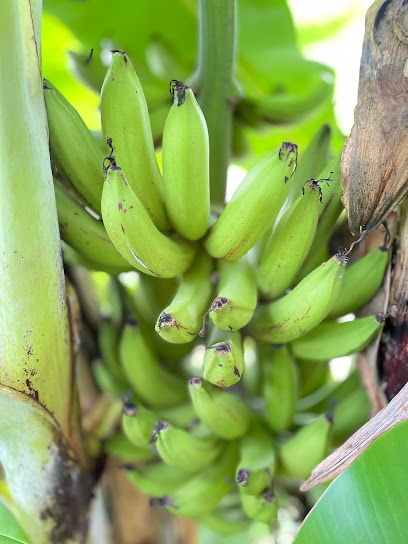
Sadee waterfall
Experience the tranquil beauty of Sadee Waterfall, a hidden gem in Laos, where nature's serenity meets breathtaking landscapes.
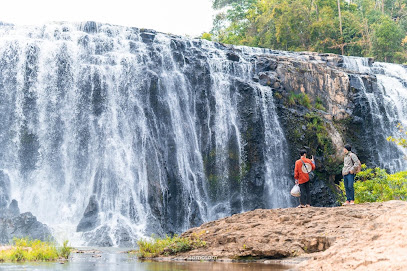
Tad Hai Bridge
Experience the stunning beauty and cultural essence of the Tad Hai Bridge in Tat Hai, a must-visit destination for every traveler.
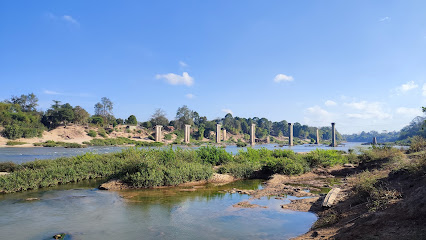
Essential places to dine
Lin's Cafe
Discover Lin's Cafe in Savannakhet – where delicious Lao, Thai, and Western cuisine meets warm hospitality in a cozy setting.

Pilgrim's Kitchen & Inn
Discover diverse cuisines at Pilgrim's Kitchen & Inn in Savannakhet—where delightful flavors meet cozy hospitality.

Home Beer
Experience authentic Laotian cuisine at Home Beer in Savannakhet - great food, refreshing drinks, and warm hospitality await you!
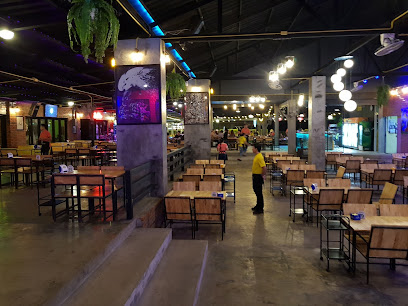
Lao View Riverfront Restaurant
Experience authentic Laotian flavors at Lao View Riverfront Restaurant with stunning views of the Mekong River.

Lao View Restaurant
Discover authentic Laotian cuisine at Lao View Restaurant in Savannakhet - where every dish tells a story.

Cafe Chez Boune Restaurant
Discover Café Chez Boune: where authentic Laotian cuisine meets inviting ambiance in Savannakhet.

Dolly's Cafe
Discover Dolly's Cafe in Savannakhet: Enjoy delicious Western cuisine including renowned pizzas in a cozy atmosphere perfect for relaxation.

Muengfar Restaurant
Discover authentic Lao flavors at Muengfar Restaurant in Savannakhet - a culinary experience not to be missed!

Lao House Restaurant
Experience authentic Laotian cuisine at Lao House Restaurant in Savannakhet – where every meal tells a story.
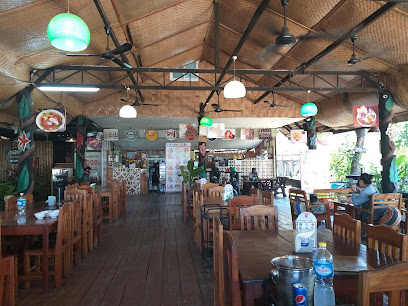
Miga Restaurant
Discover authentic Korean flavors at Miga Restaurant in Savannakhet - where every dish tells a story.

Sabaidee Restaurant
Experience authentic Laotian cuisine at Sabaidee Restaurant in Savannakhet, where every dish tells a story of rich culinary heritage.

LONG PIZZA Talat Yen Savannakhet ,Laos
Discover the authentic taste of pizza at LONG PIZZA in Savannakhet - where quality ingredients meet Laotian hospitality.

ບຸນເຕີມ ຊີ້ນມາຍ (Savan Breakfast)
Experience authentic Lao cuisine at Savan Breakfast - where every dish tells a story and every meal is a celebration.

Baguette Maison
Discover the delightful flavors at Baguette Maison in Savannakhet—where French baking meets Lao culture in every bite.
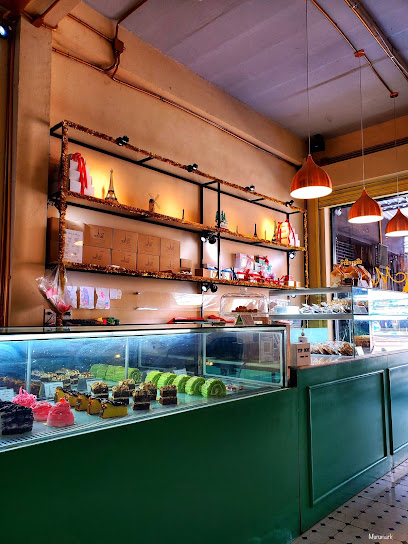
ຮ້ານອາຫານບ້ານນໍ້າລາວ Ban Nam Lao Restaurant
Savor the rich flavors of traditional Lao cuisine at Ban Nam Lao Restaurant in Savannakhet - an authentic dining experience awaits!

Markets, malls and hidden boutiques
ຕະຫຼາດແກ້ງກອກ
Experience the heart of Mouang Champhon at ຕະຫຼາດແກ້ງກອກ, a vibrant market filled with local flavors, crafts, and cultural treasures.
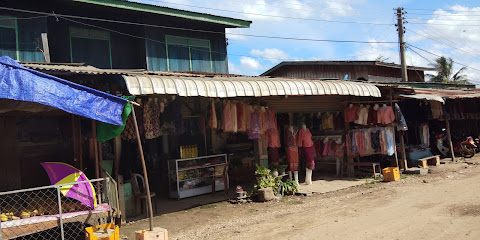
Savanxay Market
Discover the vibrant Savanxay Market in Savannakhet, where fresh produce and local culture come together in a lively shopping experience.
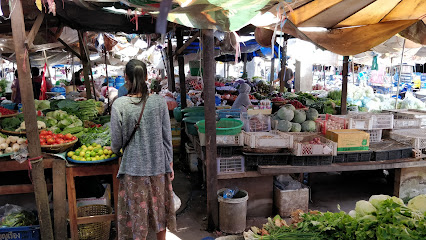
Lao House Shopping Center
Explore the Lao House Shopping Center for unique souvenirs and authentic coffee experiences in Savannahkhét, Laos.
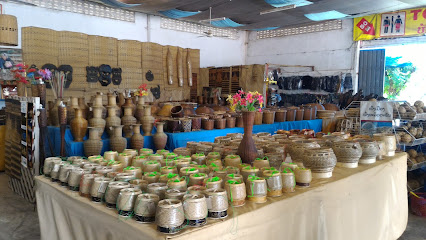
Paper Moon Shop
Explore the literary treasures of Paper Moon Shop, where books come alive in the heart of Phin, Laos.
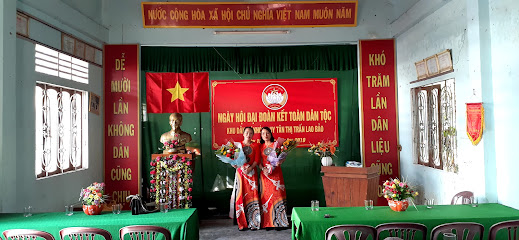
Papillon
Explore Papillon, Savannakhet's enchanting gift shop offering unique souvenirs and local handicrafts reflecting Laos's rich cultural heritage.
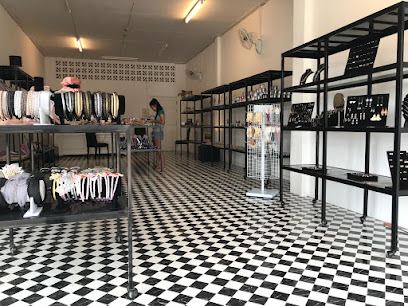
Target Store
Experience local shopping in Savannakhet at Target Store, where fresh produce and local flavors meet convenience and culture.
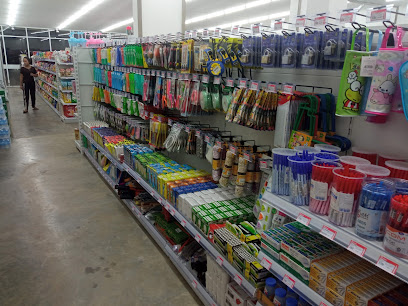
Odop Savannakhet
Discover unique gifts and local handicrafts at Odop Savannakhet, a charming gift shop in Laos that showcases the spirit of the region.

Duty Free Shopping
Explore Savannakhet's premier duty-free shopping destination for exquisite deals on luxury items, from fine spirits to designer cosmetics.
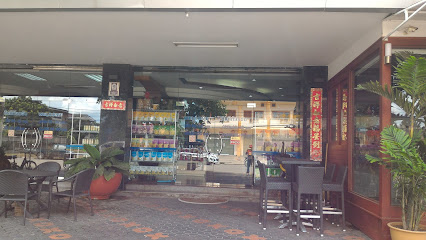
คำเผีย shopping
Experience the vibrant blend of fashion and culture at คำเผีย Shopping in Ban Phosay, where every garment reflects local heritage.
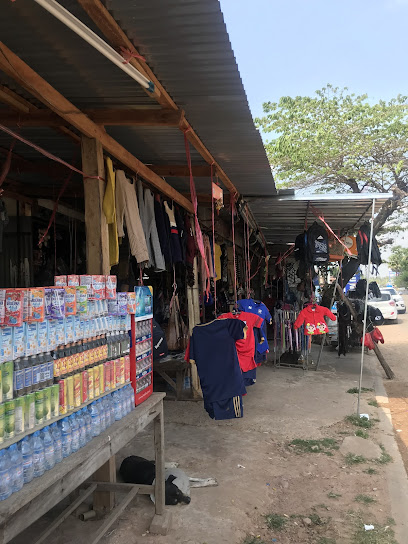
ຮ້ານນາງໄໝ
Explore the authentic flavors of Laos at ຮ້ານນາງໄໝ, a charming grocery store in ໝູ່ບ້ານໜອງນົກຂຽນ, perfect for culinary adventures.

Lalita boutique
Explore the charm of Savannakhet at Lalita Boutique, where unique gifts and local craftsmanship come together in a delightful shopping experience.
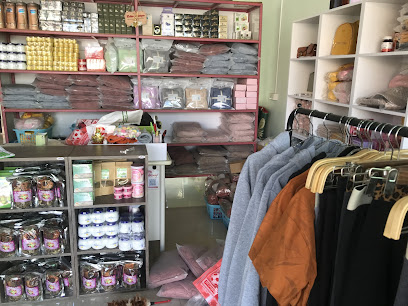
ຮ້ານ ຂາຍເຄື່ອງຍ່ອຍພໍ່ກາວ
Discover the essence of Laos at ຮ້ານ ຂາຍເຄື່ອງຍ່ອນພໍ່ກາວ, where local craftsmanship meets cultural richness.
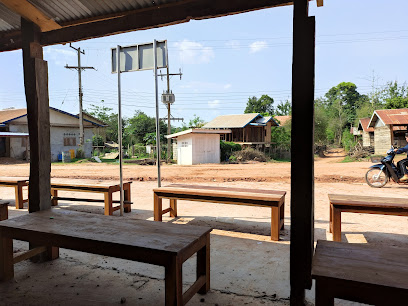
ຮ້ານ ຕັດຜົມ ຊ່າງກູ້ງ
Explore ຮ້ານ ຕັດຜົມ ຊ່າງກູ້ງ in Xeno for authentic Laotian handicrafts and souvenirs that embody the spirit of Laos.

ຮ້ານຂາຍຂອງຊ້ຳ
Explore the rich craftsmanship and unique local products at ຮ້ານຂາຍຂອງຊ້ຳ in Viang, a must-visit destination for cultural souvenirs.

ຮ້ານຂາຍເສື້ອຜ້າຈຸ໋ງຈິ໋ງ
Uncover the artistry of Laotian textiles at ຮ້ານຂາຍເສື້ອຜ້າຈຸ໋ງຈິ໋ງ, a treasure trove for clothing enthusiasts in Savannakhet.
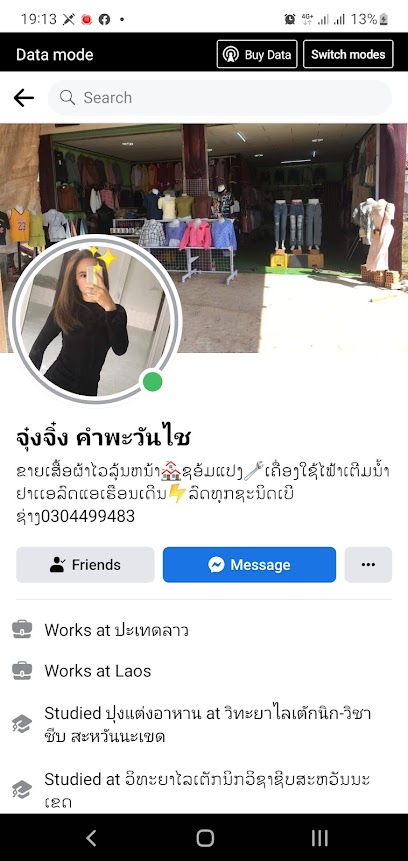
Essential bars & hidden hideouts
Lin's Cafe
Discover the comfort and flavors of Lin's Cafe in Savannakhet, where every meal is a delightful experience.
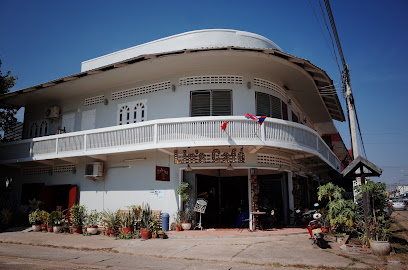
Home Beer
Discover the vibrant flavors of Laotian cuisine at Home Beer in Savannakhet, where a casual atmosphere meets delicious dining.
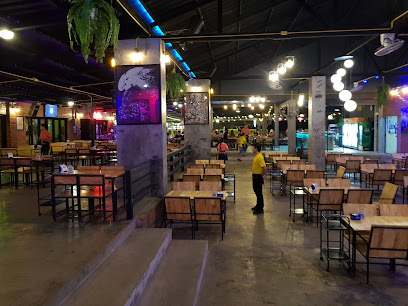
Le Corbeau bar
Discover the cozy charm of Le Corbeau Bar in Savannakhet, where rich coffee and a welcoming atmosphere await travelers seeking a unique local experience.
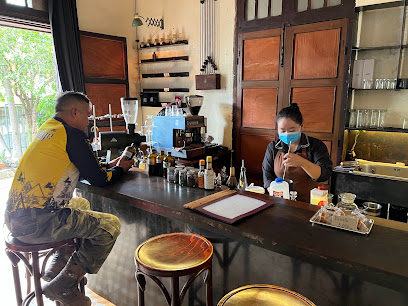
Nong Bua Restaurant & bar
Discover authentic Laotian flavors and a lively atmosphere at Nong Bua Restaurant & Bar, a hidden gem in Savannakhet.
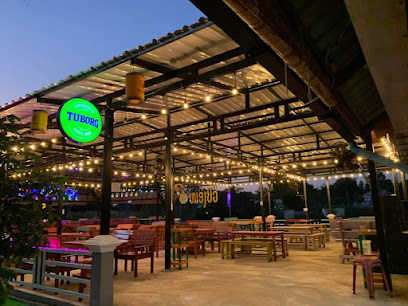
Nana beer
Discover local flavors and a vibrant atmosphere at Nana Beer, Savannakhet's go-to restaurant for authentic Laotian cuisine.
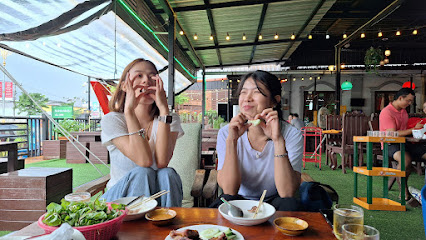
The River Cafe & Bar
Experience the tranquil beauty of Savannakhet at The River Cafe & Bar, where delicious food and stunning river views await.
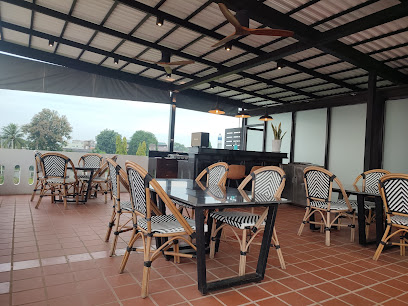
The Night Bar and Bistro
Discover the vibrant nightlife at The Night Bar and Bistro in Savannakhet, where local flavors meet international cuisine in a lively atmosphere.
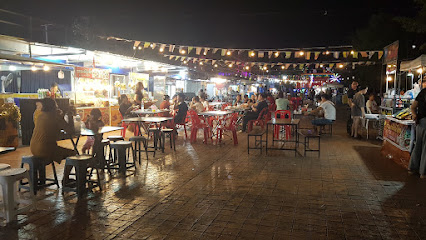
Waiwan savannakhet
Experience the vibrant nightlife at Waiwan Savannakhet, where locals and tourists unite over drinks and laughter in a lively atmosphere.
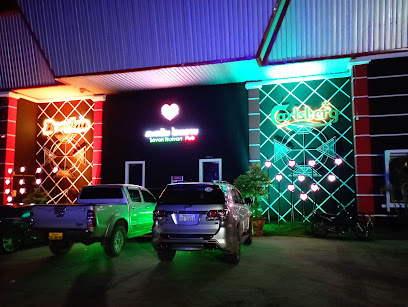
BangBar
Discover the vibrant nightlife of Savannakhet at BangBar, where delicious drinks and local culture meet in a lively atmosphere.
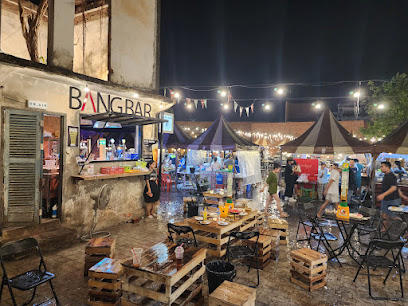
Heineken Savannakhet
Experience the vibrant flavors of craft beer and local cuisine at Heineken Savannakhet, the city's premier brewpub.
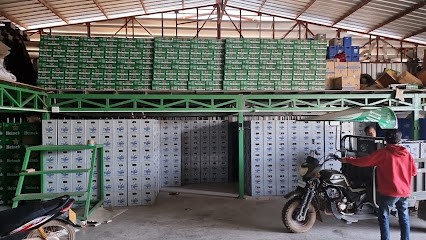
Rasha Bistro & coffee
Discover the flavors of Laos at Rasha Bistro & Coffee, a cozy retreat in Savannakhet offering a delightful menu and inviting atmosphere.
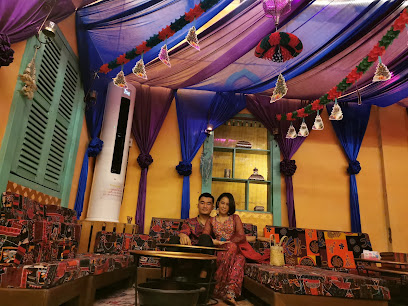
Nanglin Bar
Experience the vibrant atmosphere and local flavors at Nanglin Bar in Savannakhet, the perfect spot for relaxation and socializing.
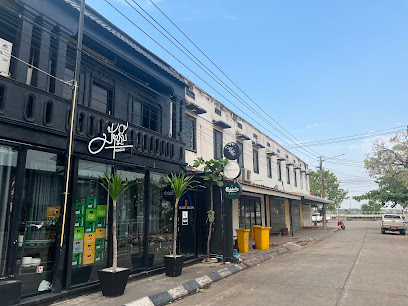
Galaxy Bar ກາແລັກຊີ້ ບາຣ໌
Experience the vibrant nightlife of Savannakhet at Galaxy Bar, where camaraderie and refreshing drinks create unforgettable memories.

ร้านตัดผมชาย
Experience traditional grooming and local charm at Savannakhet's lively barber shop, where every haircut comes with a friendly atmosphere.

ນາພໍບ້ານຫຼ້າ
Experience the vibrant nightlife and local flavors at ນາພໍບ້ານຫຼ້າ, a must-visit bar in ໄກສອນ ພົມວິຫານ.

Local Phrases about Savannakhet Province
-
- Helloສະບາຍດີ
[sa baai di] - Goodbyeລາກອາ
[lak a] - Yesໂດຍ
[doi] - Noບໍ່
[bo] - Please/You're welcomeກະລຸນາ
[ka leun na] - Thank youຂອບໃຈ
[khop chai] - Excuse me/Sorryຂ້າພະເຈົ້າ
[kha pha chao] - How are you?ດີຮັດວຽກດຽການ?
[di hat wiak diak kan] - Fine. And you?ດີຮັດແລງ. ແລ້ງມາ?
[di hat laeng. laeng ma] - Do you speak English?ເຈົ້າໃຊ້ພາສາອັງກິດໄດ້ບໍ?
[chao sai phasa angkit dai bo] - I don't understandຂ້າພະເຈົ້າເນື້ອນ
[kha pha chao nen]
- Helloສະບາຍດີ
-
- I'd like to see the menu, pleaseຂ້ອຍຕ້ອງເບິ່ງເມືອງຮ່ວມກາຍກິນ, ກະລຸນາ
[koi tong beng muang houm kai kan, ka leun na] - I don't eat meatຂ້ອຍບໍ່ກໍາຂອຍ
[koi bo kam khon] - Cheers!ຜ່ານນັດ!
[pan nat] - I would like to pay, pleaseຂ້ອຍຕ້ອງຈ່າຍ, ກະລຸນາ
[koi tong chai, ka leun na]
- I'd like to see the menu, pleaseຂ້ອຍຕ້ອງເບິ່ງເມືອງຮ່ວມກາຍກິນ, ກະລຸນາ
-
- Help!ຊ້າງ!
[sang] - Go away!ຍຶດອອກ!
[neut ok] - Call the Police!ໂທດາວະກາງ!
[tho da wa kang] - Call a doctor!ໂທດພະຍາການ!
[tho pha nyak kan] - I'm lostຂ້າພະເຈົ້າອື່ນ
[kha pha chao oon] - I'm illຂ້າພະເຈົ້າຈິ
[kha pha chao chi]
- Help!ຊ້າງ!
-
- I'd like to buy...ຂ້ອຍຕ້ອງຊື້...
[koi tong su...] - I'm just lookingຂ້ອຍກຳລັງດ້ວຍ
[koi kam lang duai] - How much is it?ມັດຖຸນນີ້ເດີ່ນ?
[mot tun ni deun] - That's too expensiveນີ້ການຂອຍສຸກໜັງຂີ້
[ni kan khon suk nang khi] - Can you lower the price?ເຈົ້າສາມາດກັບລາຄາໄດ້ບໍ?
[chao samat kab la kai dai bo]
- I'd like to buy...ຂ້ອຍຕ້ອງຊື້...
-
- What time is it?ເວລາແລ້ວແຕວ?
[welaa lao tao?] - It's one o'clockແລ້ວສິບ
[lao sip] - Half past (10)ຈຳນວຍອົດສິບ
[jum nuai ot sip] - Morningເຊົ້າ
[sao] - Afternoonແລວ
[laeo] - Eveningແກ່
[kae] - Yesterdayເວັນວັນ
[wan wan] - Todayມື້ນີ້
[mee ni] - Tomorrowມື້ອື້
[mee oon] - 1ໜ້າ
[na] - 2ໝາ
[ma] - 3ສາມ
[sam] - 4ສີ່
[si] - 5ຫ້າ
[ha] - 6ເອັນ
[oen] - 7ເຈັນ
[chan] - 8ແປັນ
[paen] - 9ເກົ້າ
[kao] - 10ສິບ
[sip]
- What time is it?ເວລາແລ້ວແຕວ?
-
- Where's a/the...?ບ່ອນທີ່ມື່ມອີ...
[boun thi mee muai ai...] - What's the address?ທີ່ຢູ່ແຕ່ໂລກ?
[thi yu tae lok?] - Can you show me (on the map)?ເຈົ້າສາມາດສະແດງຂ່າວເມືອງເຕີ?
[chao samat sa dang kaew muang tem?] - When's the next (bus)?ເວລານັ້ນມື້ອື້(ລູກຊຼາ)?
[welaa nan mee oon (luk sa)] - A ticket (to ....)ເງີນຜົນ(ເຂົ້າ...)
[ngoen pon (khao...)]
- Where's a/the...?ບ່ອນທີ່ມື່ມອີ...
History of Savannakhet Province
-
Savannakhet Province, located in central Laos, has a history that traces back to the prehistoric period. Archaeologists have discovered ancient tools and artifacts in the region, indicating early human settlement. The region's fertile lands by the Mekong River provided a nurturing ground for the development of early agricultural communities.
-
During the 10th to 13th centuries, Savannakhet was part of the Kingdom of Champasak, an influential Lao kingdom. The region served as an important trade route, connecting the Khmer Empire to the rest of Laos. This period saw the construction of significant religious and administrative structures, some of which still stand today as historical relics.
-
In the late 19th century, Savannakhet became part of French Indochina. The French influence is evident in the colonial architecture that dots the provincial capital, also named Savannakhet. French administration brought new forms of governance and infrastructure, including schools, hospitals, and roads, fundamentally altering the region's landscape and cultural dynamics.
-
During World War II, Savannakhet was occupied by Japanese forces. The occupation brought disruption and hardship, but it also sowed the seeds for future resistance movements. After Japan's defeat, the province briefly fell under Chinese Nationalist control before returning to French administration, setting the stage for the Lao struggle for independence.
-
Following World War II, the movement for Lao independence gained momentum. Savannakhet played a crucial role in this struggle, serving as a stronghold for the Pathet Lao, a communist political movement. The province witnessed numerous skirmishes and battles during the First Indochina War, ultimately contributing to the establishment of the Lao People's Democratic Republic in 1975.
-
Savannakhet is a cultural mosaic, home to a diverse array of ethnic groups including the Lao, Phouthai, and Vietnamese communities. The province is renowned for its traditional festivals, such as the That Ing Hang stupa festival, which attracts pilgrims from all over Laos and beyond. This blend of cultures is also reflected in the region's cuisine, crafts, and daily life.
-
In recent years, Savannakhet has gained international recognition for its natural heritage. The Phou Xieng Thong National Biodiversity Conservation Area, which spans a significant portion of the province, is now a UNESCO World Heritage site. This designation highlights the area's rich biodiversity and the ongoing efforts to preserve its unique ecosystems.
Savannakhet Province Essentials
-
Savannakhet Province is accessible by various means of transportation. The nearest international airport is Savannakhet Airport (ZVK), which receives flights from major cities like Vientiane and Bangkok. Alternatively, you can take a bus from Vientiane, which takes approximately 8-10 hours. There are also buses from other neighboring countries such as Thailand and Vietnam. If you prefer a more scenic route, you can take a boat along the Mekong River from Thailand.
-
Within Savannakhet Province, you have several transportation options. Tuk-tuks and motorbike taxis are widely available for short trips. For longer journeys, consider renting a car or motorbike. Buses and minibuses (songthaews) connect the main towns and villages. Bicycle rentals are also an option and offer a sustainable way to explore the area.
-
The official currency in Laos is the Lao Kip (LAK). Credit cards are accepted in some hotels, restaurants, and shops, but it is advisable to carry cash, especially in smaller establishments and rural areas. ATMs are available in larger towns like Savannakhet, but it's a good idea to withdraw enough cash before heading into more remote areas.
-
Savannakhet Province is generally a safe destination for tourists. However, standard precautions should be taken. Avoid walking alone at night in unfamiliar areas and keep an eye on your belongings in crowded places. While crime rates are low, occasional petty theft can occur. Be cautious in less populated areas and avoid displaying valuable items.
-
In case of emergency, dial 191 for police assistance and 195 for medical emergencies. The main hospital in Savannakhet town provides adequate medical care, but for serious conditions, you may need to be transferred to a larger facility in Vientiane or even abroad. It's highly recommended to have travel insurance that covers medical emergencies. Pharmacies are available in towns for minor health issues.
-
Fashion: Do dress modestly, especially when visiting religious sites. Avoid wearing revealing clothing. Religion: Do respect local customs and traditions. Always remove your shoes when entering temples and avoid touching religious artifacts. Public Transport: Do be respectful and give up your seat to elderly passengers. Don’t eat or drink on public transport. Greetings: Do greet people with a smile and a slight bow. A traditional Lao greeting, the 'nop,' involves pressing your palms together in a prayer-like gesture. Eating & Drinking: Do try local delicacies and accept food offerings graciously. Don’t refuse hospitality, as it is considered impolite.
-
To experience Savannakhet Province like a local, visit the local markets where you can buy fresh produce and traditional Lao goods. Engage with locals, who are often friendly and willing to share stories about the area’s history and culture. Don't miss visiting the That Ing Hang Stupa, a significant religious site. For a unique experience, take a walk along the Mekong River during sunset, and enjoy the local street food vendors.
Nearby Cities to Savannakhet Province
-
Things To Do in Thakhek
-
Things To Do in Pakse
-
Things To Do in Ubon Ratchathani
-
Things To Do in Champasak
-
Things To Do in Hue
-
Things To Do in Da Nang
-
Things To Do in Hoi An
-
Things To Do in Udon Thani
-
Things To Do in Tam Ky
-
Things To Do in Vientiane
-
Things To Do in Siem Reap
-
Things To Do in Nakhon Ratchasima
-
Things To Do in Phonsavan
-
Things To Do in Xieng Khouang
-
Things To Do in Vang Vieng










